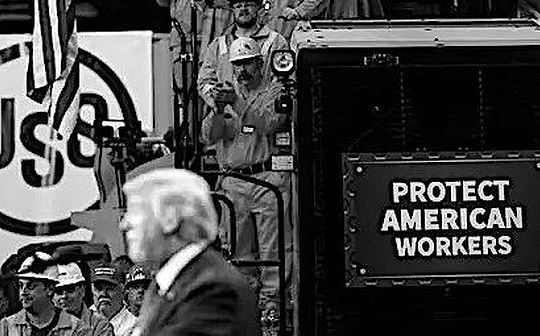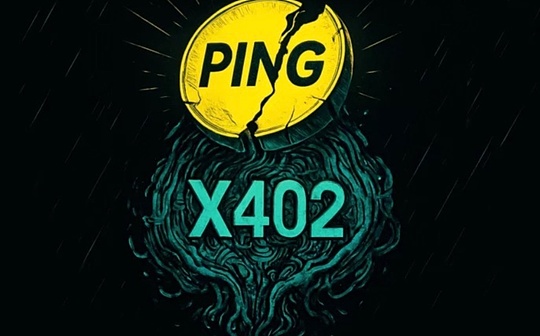
In the contemporary American economy, a striking phenomenon is quietly unfolding: total corporate sales continue to hit new highs, while the unemployment rate is showing a rare upward trend.This divergence is not accidental but the result of the intersection of technological progress and labor market dynamics.According to the U.S. Bureau of Labor Statistics (BLS), the U.S. unemployment rate rose to 4.3% as of August 2025, up slightly from 4.2% in July, while the Chicago Fed’s preliminary estimate for October shows that this number may climb further to 4.35%.At the same time, total sales of U.S. manufacturers reached US$608.27 billion in August 2025, a month-on-month increase of 0.88% and a year-on-year increase of 1.8%.The contrast highlights a structural shift within economies: productivity and sales are growing at a rapid pace driven by technology, but jobs are not keeping pace.
This article will analyze the causes of this divergence based on historical data and the latest statistics, explore the role of automation, especially artificial intelligence (AI), and assess its impact on the future economy.
Unusual divergence of sales and employment: First upheaval in 20 years
Over the past 20 years, there has generally been a strong positive correlation between total sales in the U.S. trade and manufacturing sectors and the inverted unemployment rate (that is, flipping the unemployment rate curve to reflect improving employment): Sales growth tends to be accompanied by employment expansion, and vice versa.This relationship stems from the basic logic of Keynesian economics, which is that demand drives production, which in turn stimulates employment.However, since 2022, there has been a historic rupture in this model.According to the U.S. Census Bureau’s Manufacturing and Trade Inventory and Sales Report (MTIS), in July 2025, the actual total sales of the U.S. manufacturing and trade industry (calculated at constant prices in 2009) reached 1.556742 billion U.S. dollars, an increase of about 2.5% over the same period last year, setting a new high after the epidemic.During the same period, the unemployment rate gradually climbed from 3.5% in 2022 to 4.3% in 2025. This is not only the most significant divergence in the past 20 years, but also marks the beginning of enterprises achieving “decoupled growth” through technological means.
Quantitative analysis of this divergence shows that its magnitude has exceeded the peak after the 2008 financial crisis.Federal Reserve Economic Data (FRED) database records show that in the first half of 2025, total trade and manufacturing sales increased by 5.2% cumulatively, while the inverted unemployment rate fell by 0.8 percentage points, indicating that the job market failed to capture the dividends of sales expansion.Economists attribute this to a “shift in the production function”: companies optimize processes through automated equipment and software, and output per unit of labor increases significantly.According to the Federal Reserve’s Industrial Production and Capacity Utilization Report, the industrial production index in August 2025 was 103.92 (based on 100 in 2017), an increase of 0.9% from the same period in 2024, and was near a historical high.This means that the U.S. economy has reached unprecedented levels of output of goods and services, but this has not translated into widespread employment opportunities.
Further examining the spatial and temporal distribution of divergence, this phenomenon is mainly concentrated in large enterprises.In the first quarter of 2025, U.S. corporate profit reports showed that total sales of S&P 500 index companies (representing 50% of the U.S. job market and 90% of corporate income) increased by 12.3%, but their total employment increased only slightly by 0.4%.By comparison, sales at small businesses (companies with a market capitalization of less than $2 billion) grew just 3.1% and employment contracted 1.2%.This asymmetry reflects the threshold effect of technology adoption: Large firms have more resources to invest in automation, while smaller firms face financial and technological barriers.
Industrial sector precedent: employment collapse at peak production
The industrial sector provides the clearest mirror of this divide.Since 1980, the U.S. industrial production index has experienced an overall upward trend despite the impact of globalization and the relocation of supply chains.Federal Reserve data shows that the industrial production index in July 2025 was 103.82, an increase of more than 80% from the benchmark value in 1980, and the current level is close to the historical peak.This is due to the popularization of advanced manufacturing technologies, such as the application of robot arms and CNC machine tools, which has increased the output efficiency per unit input by more than three times.However, this contrasts with the continued shrinkage of industrial employment.
According to the BLS employment situation summary report, in August 2025, the number of U.S. manufacturing employment was 12.8 million, a decrease of 12,000 from the previous month, and a cumulative decrease of 78,000 for the whole year.Since its peak of 19 million in 1980, manufacturing employment has shrunk by about 32%.This “decoupling” is not sudden, but the result of progressive technological replacement.For example, in the automotive manufacturing industry, robotic welding lines have reduced the number of labor hours required per vehicle from 40 hours in 1980 to 8 hours in 2025.The National Association of Manufacturers (NAM) reported that there were 409,000 manufacturing job vacancies in August 2025, a decrease of 29,000 from July, but recruitment demand is mainly concentrated on highly skilled engineers rather than front-line workers.
The performance of industrial stock markets further supports this trend.The Dow Jones Industrial Average (DJIA) rose 15.2% in the first half of 2025, with the industrial subsector (such as machinery and equipment and chemicals) rising 18.4%, hitting a 20-year high.This reflects investors’ optimistic expectations for the efficiency of automation: companies have reduced labor costs through technology investments, and profit margins have risen from 7.5% in 2020 to 11.2% in 2025.The price of this prosperity, however, is instability at the social level.The loss of industrial jobs has exacerbated income inequality in the Midwestern “Rust Belt” region, with the region’s Gini coefficient rising to 0.48 in 2025, 5 percentage points higher than the national average.This has also indirectly promoted political polarization and social unrest, such as the prominent issue of manufacturing revitalization in the 2024 general election.
Parallel booms in stock markets and unemployment: a historical rarity
What is even more alarming is that the boom in the stock market has coincided with rising unemployment, which is extremely rare in history.The S&P 500 has a year-to-date return of 18.38% in 2025 through October, with a price return of 17.15% and a dividend return of 1.22%.This performance surpassed the 24.2% peak in 2023 and was mainly driven by the technology and industrial sectors.However, the unemployment rate rose from 4.1% to 4.3% during the same period, and the average monthly growth in non-agricultural employment was only 120,000, far lower than the pre-epidemic level of 180,000.
Historical data shows that this “prosperity-unemployment” parallel occurred only twice during the dot-com bubble in the late 1990s and the early 2000s, each time followed by a market correction.The FRED database shows that since 1950, there have been only five years when the S&P 500’s annual return exceeded 15% while the unemployment rate rose, and the average subsequent 12-month market correction was 10%-15%.The scenario in 2025 is more complicated: the inflation rate is stable at 2.5%, the Federal Reserve’s benchmark interest rate remains at 4.75%-5%, and there are obvious signs of a soft landing in the economy, but it has not translated into a rebound in employment.This hints at structural factors – technology-driven cost savings that allow companies to grow profitably without relying on workforce expansion.
The performance of small-cap stock markets is more closely aligned with labor realities.The Russell 2000 (the small-cap benchmark) has returned just 8.7% so far in 2025, well below the S&P 500, and its cumulative return since 2021 is down 5.2%.Vanguard analysis shows that small-cap earnings growth will fall from 12% in 2021 to 4.5% in 2025, which is highly correlated with rising unemployment.This suggests that small businesses (which account for 60% of U.S. employment) are more vulnerable to fluctuations in labor costs and cannot cushion the blow through automation in the same way that larger businesses can.
AI penetration into the service industry: the next frontier of the automation wave
Automation in the industrial sector is a foregone conclusion, and the rise of artificial intelligence (AI) is pushing this wave toward the service industry, which accounts for 80% of employment in the U.S. economy.The service industry includes finance, retail and professional services. These fields have traditionally relied on human-intensive labor, but AI’s generative models (such as GPT-5) are reshaping their production paradigms.According to the World Economic Forum (WEF) 2025 Future of Jobs Report, AI is expected to replace 85 million jobs by 2027, but at the same time create 97 million new jobs, a net increase of 12 million.However, the substitution effect is more significant in the short term: Goldman Sachs estimates in 2025 that 6%-7% of U.S. white-collar jobs (such as data analysis and customer service) will disappear due to AI automation.
CEO survey data reinforce this expectation.KPMG’s 2025 Global CEO Outlook Report shows that 79% of CEOs said that AI has prompted them to re-examine employee training strategies, and 71% regard AI as the main driver of workforce transformation in the next three years.Forbes’ 2025 C-level executive survey further noted that 94% of respondents predicted that AI would eliminate less than 5% of jobs in the next 2 years, but 59% believed that AI would eventually improve overall productivity.PwC’s 2025 Global AI Employment Barometer optimistically points out that the salary growth rate for positions with high AI exposure is 4.2%, higher than the average of 2.8%, indicating that technology can “add value” to the labor force rather than simply replace it.
The proliferation of reskilling programs is a barometer of this transformation.Udemy’s 2026 Global Learning and Skills Trends Report shows that registrations for AI-related courses in 2025 will surge fivefold from 2024 to more than 11 million times, covering corporate employees and individual learners.A 2025 survey by the edX platform shows that 53% of workers plan to start reskilling in the next six months, and 52% believe that skills need to be comprehensively reshaped to cope with the impact of AI.WEF predicts that 50% of employees will need to be reskilled by the end of 2025, with focus areas including machine learning and data ethics.These investments reflect a consensus among businesses and individuals: AI is not a job killer but a productivity amplifier.Taking industry as an example, machines do not completely replace manpower, but allow one person to operate multiple pieces of equipment, increasing output by 4-5 times.AI may be similar in the service industry: one AI-assisted financial analyst can handle the equivalent workload of 4-5 people.
The embarrassing reality of current AI implementation: high investment and low return
Despite optimistic expectations, the actual deployment of AI faces bottlenecks.The Massachusetts Institute of Technology (MIT) 2025 Generative AI Report Update shows that 95% of enterprise AI pilot projects fail to generate return on investment (ROI), mainly due to high infrastructure costs and integration difficulties.The report analyzed 500 companies and found that only 5% of projects achieved rapid revenue acceleration, while the rest were mostly stagnant in the proof-of-concept stage.In terms of budget allocation, more than 50% is used for sales and marketing tools, but the largest ROI occurs in logistics automation, such as supply chain optimization, which improves efficiency by 15%-20%.
The frustration is greater among small businesses.A 2025 Gallup survey showed that 55% of small and medium-sized business owners admitted that they regretted replacing manpower with AI. Reasons include training costs (an average of US$5,000 per employee) and output not meeting expectations.In contrast, although large enterprises have invested billions of dollars in AI infrastructure (for example, Meta’s capital expenditures will account for 36%-38% of revenue in 2025), the short-term ROI is also slim.BCG’s 2025 AI Workplace Report pointed out that the enterprise AI adoption rate reached 94%, but only 30% reported productivity improvements, and the remainder was mostly due to the “Silicon Ceiling” effect – it is difficult for grassroots employees to break through technical barriers.
Big vs. Small Business: A Magnifying Glass of Divergence
The divergence between the large S&P 500 companies and the labor market is particularly stark.These companies account for 90% of U.S. corporate revenue. In the second quarter of 2025, sales increased by 14.9% and employment increased by only 0.5%.Russell 2000 small-cap stocks will see earnings decline by 2.1% in 2025, falling in line with the unemployment rate.Vanguard Group predicts that the annualized return of small-cap stocks will lag the market by 1.9 percentage points over the next 10 years, mainly due to high financing costs and lagging technology adoption.
Analyzing large technology giants, profit expansion is mostly due to non-AI factors.NVIDIA’s fiscal year 2025 revenue is US$130.5 billion, an increase of 114%, but it mainly comes from the high pricing of data center chips, with a gross profit margin of 75%.Meta and Alphabet increase profits through advertising optimization. Meta’s operating profit margin will rise to 28% in 2025, and Alphabet’s cash flow will increase by 13.2%.80% of Amazon’s revenue comes from AWS cloud services and advertising, not AI core.Microsoft’s software business has low marginal costs, and revenue growth increases with scale. Revenue is expected to grow by 14.9% in 2025.These companies have spent tens of billions of dollars on AI, but this has not translated into cost savings; instead, AI infrastructure has become a new cost center.
To sum up, the U.S. economy is at a technology-driven crossroads: sales and production are hitting records, but employment is lagging, creating a divergence rare in 20 years.The industrial sector has completed its automation transformation, and the service industry is following the AI wave.The latest data shows that industrial production will run at a high level in 2025 and employment will continue to shrink; the S&P 500 boom has concealed the mirror image of small-cap stocks and the unemployment rate.CEO survey heralds workforce reshaping, but MIT report warns of implementation bottlenecks.The profits of large companies are not due to AI, while small companies are struggling to survive.
Outstanding short-term risks: The valuation of AI-related stocks (such as NVIDIA) is frothy, with a P/E ratio of 60 times in 2025, far exceeding the historical average of 35 times.If ROI continues to be sluggish, market adjustments may trigger a chain reaction of employment, with Goldman Sachs warning of 6%-7% job losses.In the long term, AI reskilling will unleash a productivity potential of US$4.4 trillion (McKinsey estimate), but policy intervention is needed: government subsidies for retraining and tax incentives for a fair transition to automation.Otherwise, disagreements will amplify inequality and threaten economic stability.
Looking forward to 2026, if the Federal Reserve continues to cut interest rates, small-cap stocks may rebound by 10%, but the risk of the AI bubble bursting is as high as 30%.Companies need to balance investment and manpower, and employees should embrace reskilling.Technology is not the enemy, but a mirror, reflecting a future where the economy needs to be more inclusive.






